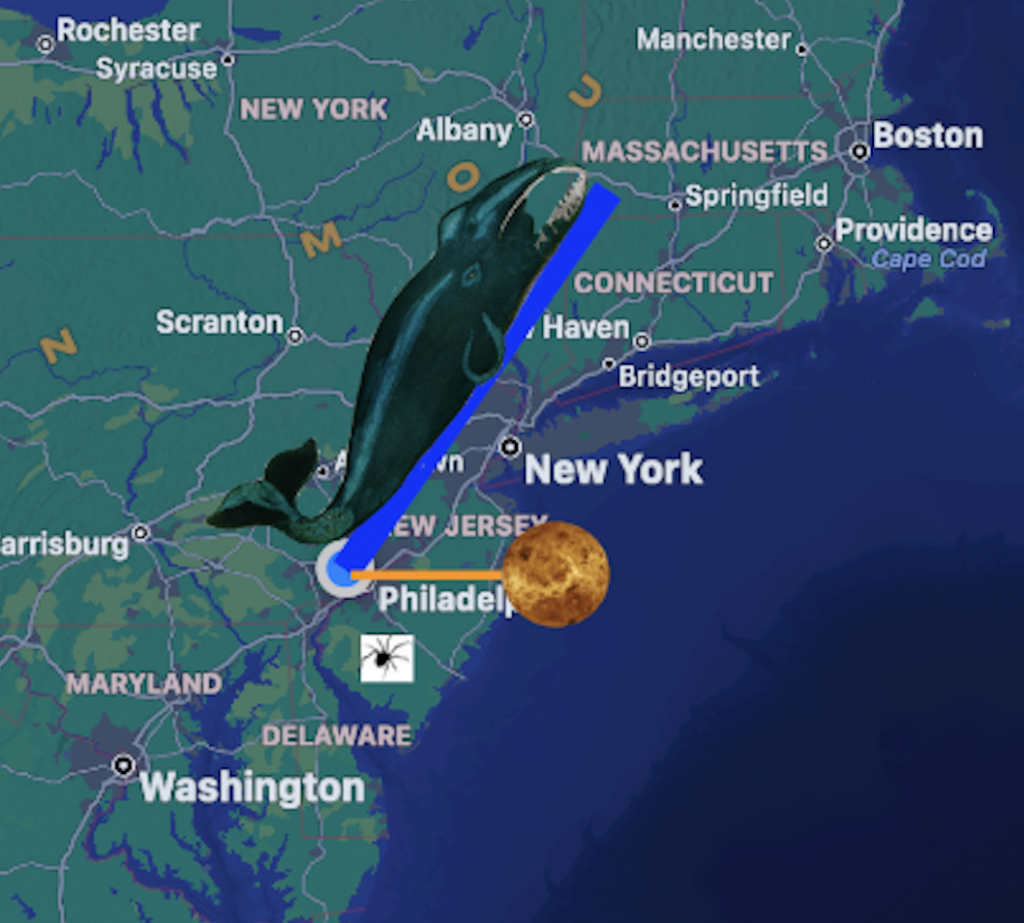There are many points in Lucian’s True History where he mentions an absurd distance or an inconceivable number of creatures. For my final ergon, I calculated and mapped out a variety of the strange beasts in this story. Starting with his journey to the moon, one of the measurements that fascinated me the most was the size of the spiders. At 1.15, he says “there are many giant spiders, each far bigger than any of the islands of the Cyclades.” According to a quick Google search, the largest of the islands, Naxos, is about 170 square miles. In the attached map, I placed the spiders in New Jersey for scale.
The unit that Lucian uses the most is “stade.” One stade is roughly 600 feet. After their battle with the Sun, King Endymion sent 1,000 horse-vultures to accompany the party for 500 stades. At 1.28, Lucian says that they “traversed many lands” before briefly stopping at Venus, but it isn’t until 1.29 that he says that the vultures left, meaning that Lucian estimates the distance between the moon and Venus to be the same between Bryn Mawr, Pennsylvania, and Bridgewater, New Jersey.
After the adventures in space, the ship gets eaten by a whale-monster that’s 1500 stades, or 170 miles long! This is by far the biggest creature yet. If the whale’s chin rested in Bryn Mawr, the end of the tail would be almost in Ithaca, New York. Near the end of the first book, Lucian and his crew escape the whale after it is attacked by giants using islands as triremes. The standard trireme measurement was 130×20 ft, adding up to a total perimeter of 300 ft. According to Lucian, the islands had a perimeter of 100 stades, meaning the island triremes were probably 25,000×4,200 feet (or 4.8×0.8 miles), which is the length of almost 70 football fields.
